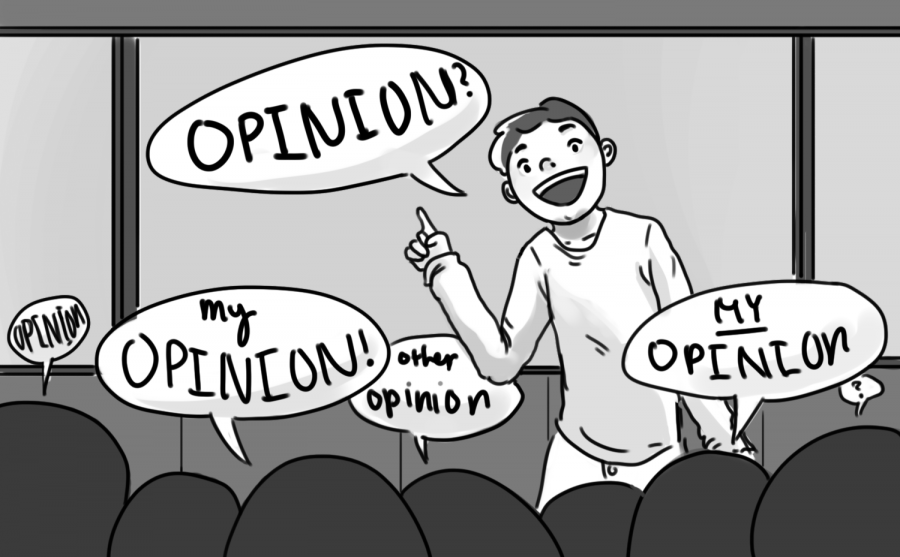Teachers, Stand Up For Your Stances
After Mountain View High School’s history teacher Frank Navarro was reportedly put on paid leave for comparing Donald Trump to Adolf Hitler, news of the controversy spread across the nation. While Mountain View’s administration allowed Navarro to come back, the debate over whether teachers should express their opinions on everything ranging from historical figures to current events has certainly hit close to home.
Navarro’s comparison was reported to the administration by a student’s parent who expressed concerns over Navarro’s seemingly biased perspective. The idea that some students feel uncomfortable when teachers express their opinion is a legitimate concern. Yet, teachers’ opinions can often stimulate greater discussion and promote students to express their own opinions. Teachers should express their opinions in the classroom as long as they create a welcoming environment for all students, even those with perspectives differing from their own.
“You don’t want to create an environment where people don’t feel free to express their opinions,” social studies teacher Derek Miyahara said. “The question is, if a teacher presents a particular point of a view, how chilling is that to the students in terms of presenting their own point of view?”
It’s a tricky debate, but there certainly are ways for teachers to ensure that they aren’t isolating students with their opinions. For one, a teacher who is open to correction encourages equalized, intellectual debates rather than one-sided arguments.
“It’s very important for teachers to always be open to be corrected and to model times where they might be wrong and admit it,” social studies teacher Seth Donnelly said. “If we create an atmosphere where people are open to being corrected, [sharing your opinion] is not such a scary thing. But if teachers exercise their opinions in a way where they say, ‘I’m right’ and stomp out student’s opinions, that’s unprofessional.”
Recognizing the merit of students’ controversial opinions can also help create an environment in which students are willing to share their opinions. It’s certainly possible to disagree while simultaneously acknowledging the other side.
“In economics class, there have been people who have expressed economic opinions that are different from mine,” Miyahara said. “Usually what I say is that I don’t agree but there are a lot of professional economists who do, because for any opinion that anyone puts out, you will find professional historians and economists who [agree]. I try to say, ‘Even though I don’t agree, that doesn’t invalidate the point.’”
By promoting students to share and discuss in a welcoming environment, teachers can help their students think critically. Students naturally look to their teachers as models and teachers who are open with their own views promote greater room for ideas in the classroom space.
“The teacher should be part of the community,” Donnelly said. “I think if we want our students to model being open, part of what makes good teaching is for teachers to be open at times — saying, ‘Here’s something; here’s some of my thoughts and feelings on the subject, what do you think?’”
Moreover, a teacher who can express his or her opinion is able to offer insight that students may not know. While the teacher isn’t always right, he or she possesses a knowledge base that surpasses those they are teaching. Stifling their ability to share their thoughts and analysis rooted in that knowledge base most certainly takes away from their ability to educate.
Creating a welcoming environment while also being open with their opinions is not an easy task for any teacher. At times a teacher may make students uncomfortable or may be forced to withhold their opinions, but when they do find a balance, they are able to effectively engage and educate their students.
“lf teachers express their opinions too heavily, it stifles students sharing theirs,” Donnelly said. “But the teacher’s job is to facilitate and bring out views, so you have to find a balance.”



